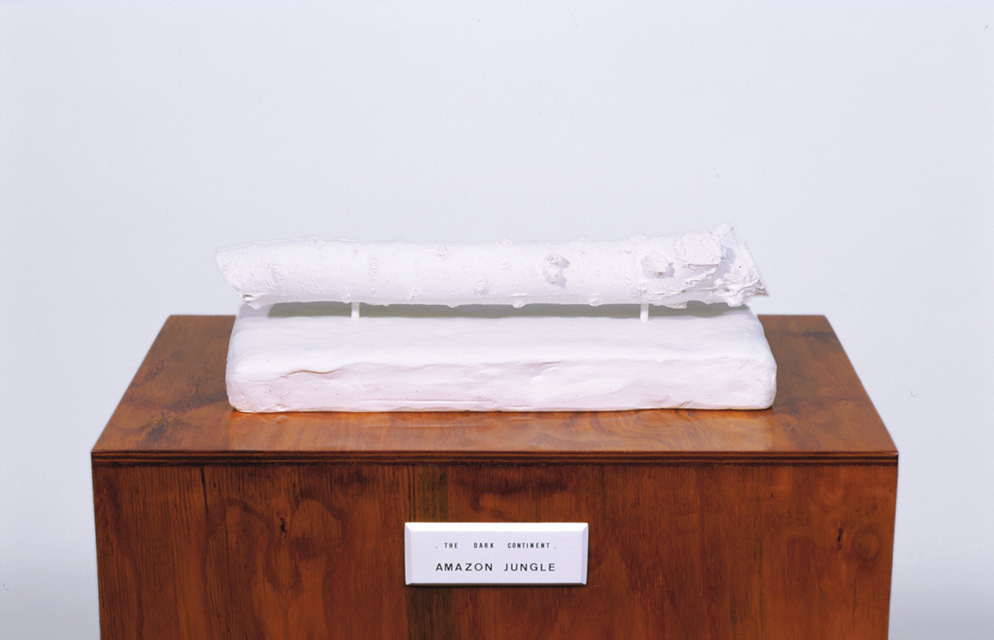


As a painter, Jan Nelson originally explored the idea of the landscape. In works exhibited in the 1980s, she reflected on the ways in which images of the landscape invoke the politics of exploration and occupation, and the poetics of space. Contemporary perceptions and historical representations of the land suggested to the artist that, 'Our culture requires us to possess, build on, enclose the land—to oppose the natural order'.1 While her sculptures use materials and strategies quite different to those of the earlier paintings, Nelson continues to address the ways in which we attempt to grasp the landscape.
The dark continent: Amazon Jungle and The dark continent: Grand Canyon (both 1994) offer the museum visitor scale models of vast geographical territories. Pathetically small in contrast to the reality that they invoke, these pale, washed-out fragments are clearly a poor substitute for the real thing. While the formalities of the label and the plinth confer a sense of ceremony and significance on the objects, Nelson seems to suggest that the tricks of the museum trade will never be enough to bridge the void between the world 'out there' and the faint echoes of it that we hear in art.
The grandiose aspirations of the sculptures—implying that entire regions can be distilled down to a plinth-scale object—call to mind the wider ambitions of museums. Like many artists of the 1990s, Nelson was conscious of the modern museum as an institution with its roots in the Enlightenment. As a purveyor of knowledge, the museum typically relies on ordering systems and categorical divisions. Nelson's sculptures reflect that system, presenting two samples of the American continent. In mimicking museum display, the artist points to the way that the desire to study, know and possess the landscape propels the museum and its visitors. This is reinforced by the reduction of the objects and their placement on low plinths; the visitor looms above the items, able to adopt an expansive point of view.
The knowledge on offer is not, however, objective. As Nelson's evocative titles suggest, our understanding of the world is as much poetic and mythical as it is rational. The dark continent evokes a sense of distance and mystery, perhaps even of the unknown reaches of the unconscious mind. Allegorical and metaphorical perceptions of the world are also evoked: the Amazon basin as 'the lungs of the world' and the Grand Canyon as an awe-inspiring register of the passage of millennia. Again, the cheap, mute qualities of the white plaster objects seem at odds with the sublime scale of space and time. Art encourages a desire to connect with nature but can never substitute for it or truly allow the viewer to possess it.
It is paradoxes such as this that give Nelson's sculptures their enigmatic quality. Although founded as a site of knowledge, the museum seems to pander to the unconscious rather than the rational mind. The strategies of display are theatrical, even fetishistic. The visitor is driven more by fantasy and romance than by the search for empirical knowledge.
- Chris McAuliffe
Jan Nelson is represented in Australia by Anna Schwartz Gallery, Melbourne and Sydney.